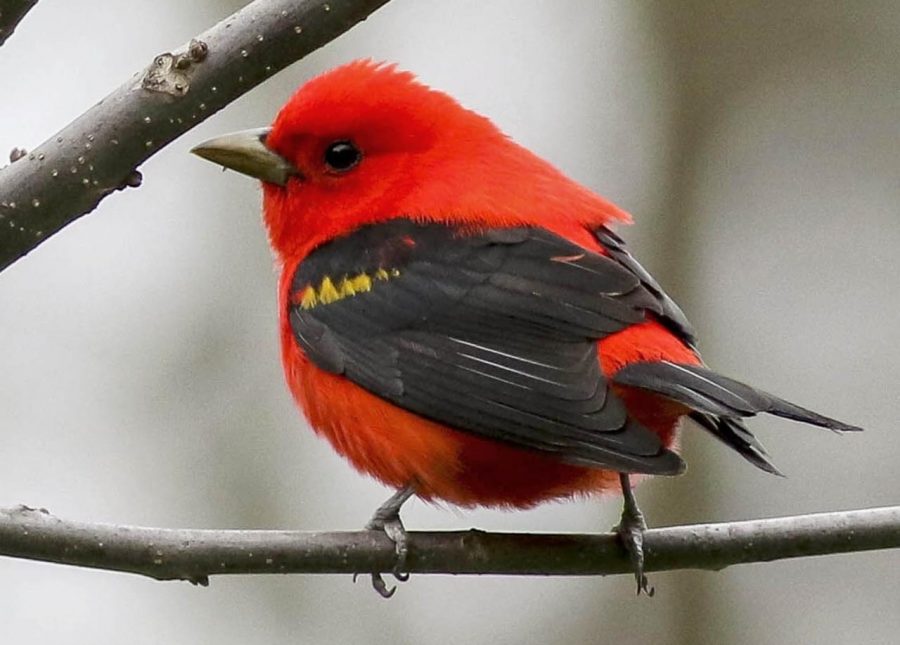
SCARLET TANAGER
This colourful songbird is found in most forested areas in Essex County during spring migration. The bold red and black patterning of the male is unmistakable. The Scarlet Tanager’s song is described as a robin with a sore throat – so if you hear a husky robin sound, take a look around for a flash of red.
Male Scarlet Tanagers are among the most blindingly gorgeous birds in an eastern forest in summer, with blood-red bodies set off by jet-black wings and tail. They’re also one of the most frustratingly hard to find as they stay high in the forest canopy singing rich, burry songs. The yellowish-green, dark-winged females can be even harder to spot until you key in on this bird’s chick-burr call note. In fall, males trade red feathers for yellow-green and the birds take off for northern South America.
Size & Shape
Scarlet Tanagers are medium-sized songbirds with fairly stocky proportions. They have thick, rounded bills suitable both for catching insects and eating fruit. The head is fairly large and the tail is somewhat short and broad.
Color Pattern
In spring and summer, adult males are an unmistakable, brilliant red with black wings and tails. Females and fall immatures are olive-yellow with darker olive wings and tails. After breeding, adult males molt to female-like plumage, but with black wings and tail.
Behaviour
Primarily insectivorous during the summer, Scarlet Tanagers also eat fruit during migration and on the wintering grounds. They spend much of their time skulking among the wide leaves of deciduous trees in the forest canopy, where they are hard to see. They sing a burry, rambling song and give a distinctive, harsh chick-burr call.
Habitat
Scarlet Tanagers breed in deciduous and mixed deciduous-evergreen forests in eastern North America. They are somewhat sensitive to habitat fragmentation, so look for them in large, undisturbed tracts of forest. During migration, they move through a broader variety of forest and shrubby habitats, as well as backyards.
*Image and description were sourced from: allaboutbirds.org


